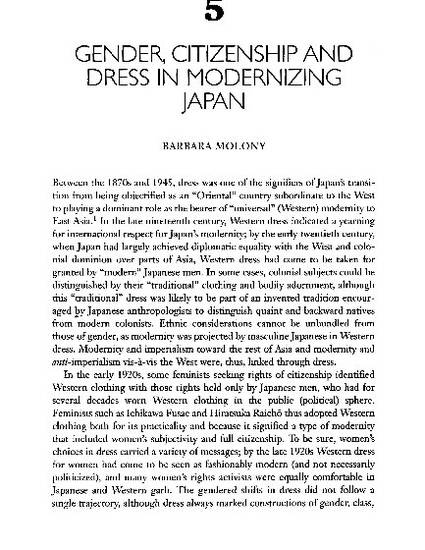
Between the 1870s and 1945, dress was one of the signifiers ofJapan's transition from being objectified as an "Oriental" country subordinate to the West to playing a dominant role as the bearer of "universal" (Western) modernity to East Asia. 1 In the late nineteenth century, Western dress indicated a yearning for international respect for Japan's modernity; by the early twentieth century, when Japan had largely achieved diplomatic equality with the West and colonial dominion over parts of Asia, Western dress had come to be taken for granted by "modern" Japanese men. In some cases, colonial subjects could be distinguished by their "traditional" clothing and bodily adornment, although this "traditional" dress was likely to be part of an invented tradition encouraged py Japanese anthropologists to distinguish quaint and backward natives from modern colonists. Ethnic considerations cannot be unbundled from those of gender, as modernity was projected by masculine Japanese in Western dress. Modernity and imperialism toward the rest of Asia and modernity and anti-imperialism vis-a-vis the West were, thus, linked through dress.
Louise Edwards

Copyright © 2007 Sussex Academic Press. Reprinted with permission.